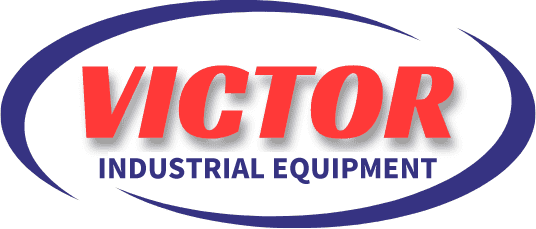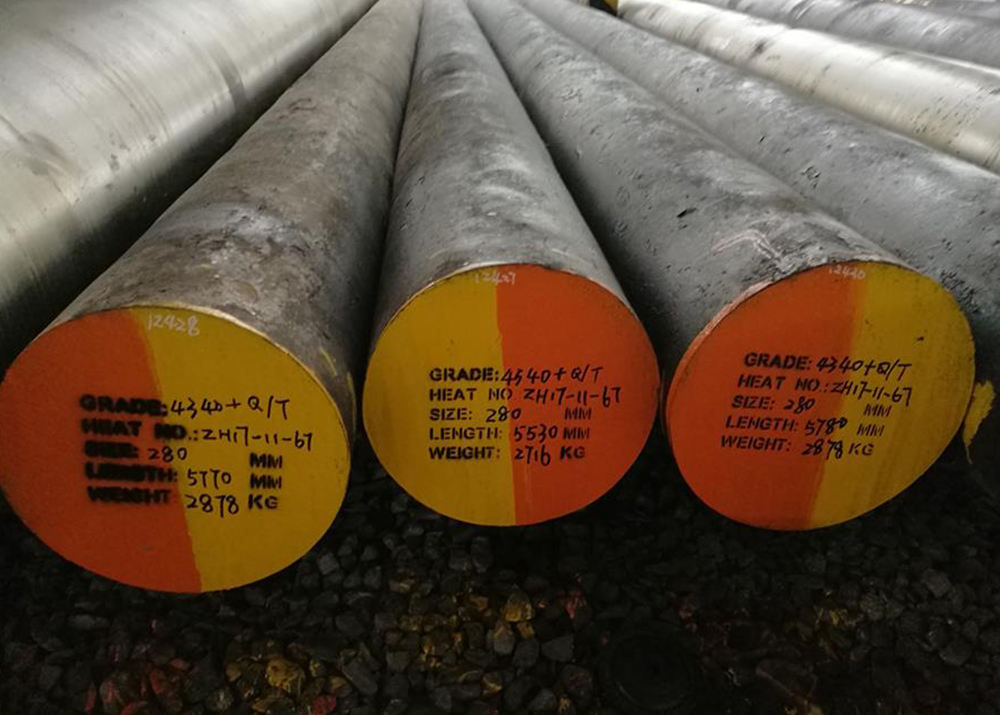Chemical Composition
|
C(%)
|
Si(%)
|
Mn(%)
|
P(%)
|
S(%)
|
Cr(%)
|
Ni(%)
|
Mo(%)
|
|
0.38~0.43
|
0.15~0.30
|
0.60~0.80
|
≤0.035
|
≤0.040
|
0.70~0.90
|
1.65 ~ 2.00
|
0.20~0.30
|
Mechanical Properties
|
Yield
Strength
Rp0.2(MPa)
|
Tensile Strength
Rm(MPa)
|
Impact Energy
AKV(J)
|
Elongation at
Fracture
A(%)
|
Reduction in Cross
Section on Fracture
Z(%)
|
Impact toughness
value αkv (J/cm2)
|
Hardness(Brinell)
|
|
≥ 862(85)
|
≥ 1282(100)
|
≥ 78
|
≥ 12
|
≥ 55
|
≥ 98
|
≤ 363
|
Equivalent Grades
|
Country
|
USA
|
Britain
|
Britain
|
Japan
|
|
Standard
|
ASTM A29
|
EN 10250
|
BS 970
|
JIS G4103
|
|
Grades
|
4340
|
36CrNiMo4/
1.6511
|
EN24/817M40
|
SNCM 439/SNCM8
|
Heat Treatment
Heat
treatment after forging is carried out to render the steel suitable for
machining, and to meet the mechanical property limits specified for the steel’s
particular applications. There are several ways to heat treat a given steel
part and it is only through practice that the optimum temperature and
conditions may be defined. The following information should be taken as a guide
only.
Annealing
To obtain
a pearlitic structure on certain parts for machining, 4340 should be annealed
at a nominal temperature of 1525 º F (830 º C,) cooling to 1350 º F (730 º C)
and furnace cooling to 1130 º F (610 º C) at a rate of 20 º F (11 º C) per
hour, then air cooling. This process, known as full annealing, is very time
consuming as it involves slow cooling over the entire temperature range from
the austenitizing temperature to a temperature well below that at which
transformation is complete.
To obtain
a spheroidized structure in 4340 grade involves austenitizing at 1380 º F (750
º C,) furnace cooling to 1300 º F (705 º C) then to 1050 º F (565 º C) at a
rate of 5 º F (3 º C) per hour. This structure will probably result in better
machinability than will the coarse lamellar pearlite structure obtained by the
full anneal process.
Normalising
This
process is defined as heating a steel to a temperature above the ferrite to
austenite transformation temperature, then cooling in air to a temperature well
below this transformation temperature. The treatment may be carried out on
forged products as a conditioning treatment prior to final heat treatment.
Normalizing also serves to refine the structure of forgings that might have
cooled non-uniformly from their forging operation. The nominal normalizing
temperature for 4340 grade is 1500 º F (815 º C,) but production experience may
necessitate a temperature either 50 º F (10 º C) above or below this
temperature. . As a rule of thumb, when forgings are normalized before, say,
carburizing or hardening and tempering, the upper range of normalizing
temperatures is used. When normalizing is the final heat treatment, the lower
temperature range is used.
Hardening
This heat
treatment results in the formation of martensite after quenching, resulting in
increased hardness and tensile strength. A temperature range of 1500 – 1550 º F
(815 – 845 º C) is the normal austenitizing temperature for direct hardening of
4340 grade. Oil quenching is normally used for 4340 as the alloy’s
hardenability is suited to this quenching method.
Tempering
Tempering
is carried out to relieve stresses from the hardening process, but primarily to
obtain mechanical properties required for the final application. The actual
tempering temperature will be chosen to meet the required properties, and in
many cases will be a matter of trial and error.
This
grade 4340 may also be hardened by nitriding or flame or induction hardening.
Machinability
This
grade is readily machinable, with either a coarse lamellar pearlitic structure
or a spheroidized structure being best advised, depending upon section size and
complexity and amount of machining to be carried out. If there is doubt about
the suitability of any other structure, then a spheroidizrd structure should be
aimed for in heat treatment.
Welding
This
grade is readily welded in the annealed condition, but welding in the hardened and
tempered condition should be avoided where possible because of the effect on
mechanical properties. Welding in the nitrided or flame or induction hardened
conditions is not recommended.
Guidance
details for welding include the use of low-hydrogen electrodes and a preheat
from 400 – 570 º F (200 – 300 º C,) if possible to be maintained during
welding. Parts should be slow cooled after welding in ashes or sand and stress
relieved if possible.
Applications
It is
used as important quenched and tempered parts that require good toughness, high
strength, and large size, such as heavy machinery high-load shafts, turbine
shafts with a diameter greater than 250mm, helicopter rotor shafts, turbojet
turbine shafts, blades, and high Load transmission parts, crankshaft fasteners.
Gears, etc.; can also be used for rotor shafts and blades whose operating
temperature exceeds 400℃; after nitriding, it can be used to manufacture
important parts with special performance requirements. It can be used for
ultra-high temperature after low temperature tempering or austempering.
Strength steel is used.



